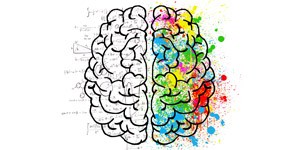By Saoirse O'Sullivan

Dr Saoirse Elizabeth O'Sullivan received her doctorate from Trinity College Dublin in 2001 and moved to the University of Nottingham in 2002 as a Research fellow where she began researching cannabinoid pharmacology. She was made Lecturer in 2007 and Associate Professor in 2011. She has over 26 original research articles, 6 reviews and 3 books chapters on the topic of cannabinoid pharmacology, with specific interests on the cardiovascular and gastrointestinal effects of cannabinoids and therapeutic potential of cannabis-based medicines. Her research methodologies span from cellular and animal models to human healthy volunteer studies and early phase clinical trials. In 2016 she was named the International Cannabinoid Research Society Young Investigator of the year. In 2017, Saoirse started her own consulting company, CanPharmaConsulting.
This means that the body is not able to transport sugars (glucose) from the blood for storage. This has the duel effect of causing high glucose levels in the blood and means the body can't use glucose as its normal fuel. The complications that arise from high levels of blood glucose include metabolic disturbances, cardiovascular disease, eye and kidney problems, and pain.
There are a range of treatments available for diabetes including insulin replacement (everyone with type 1 and some people with type 2 diabetes), drugs prescribed to help control blood sugar levels and increase insulin secretion or sensitivity, and lifestyle changes and surgery. Despite these interventions, diabetes is still the major cause of blindness, kidney failure, heart attacks and stroke, and is one of the leading causes of death worldwide. Therefore, it is crucial to have more treatment options available to patients to make sure their diabetes is well managed and controlled.
Cannabis smoking and diabetes
Many diabetes sufferers self-medicate with cannabis/marijuana or cannabis-based products. Some find it helpful with controlling blood sugar, others find it useful for weight management, pain relief, depression or general wellbeing. This has led to is considerable interest in how cannabis might affect diabetes, either positively or negatively, which has been investigated in a number of epidemiological (the study and analysis of the patterns, causes, and effects of health and disease conditions) studies. One US study suggested that current marijuana use was associated with lower insulin levels and greater insulin sensitivity (both suggesting good blood sugar control) in 4,657 participants. Another study showed that there was no association between marijuana use and diabetes in 3,034 participants, but there was a greater risk of pre-diabetes (the stage before diabetes where higher than normal blood sugars are seen) in a longitudinal study of 3151 participants. Another longitudinal study of 17,967 participants in Sweden found no association between cannabis use and type 2 diabetes. Similarly, a smaller study (30 subjects) found that cannabis smokers did not have different plasma levels of glucose or insulin. Taking all these studies into consideration, it would seem that cannabis/marijuana smoking is either neutral or beneficial in diabetes. In fact a meta-analysis (a study combining the statistics of several studies together) suggested a possible protective effect of cannabis smoking in diabetes.
Controlled clinical trials with cannabinoid-based medicines in diabetic patients
The best way to prove that a medicine works is to test it in controlled clinical trials in the relevant patient population and to date, this has been investigation for cannabinoid-based medicines in diabetes in two areas: CB1 receptor blockade (Rimonabant/Accomplia) for weight loss and diabetes, and diabetic pain (neuropathy) reduction by ∆9-terahydrocannabinol (THC), in the form Nabilone/Cesamet), THC smoking, or Sativex (a THC:CBD combination drug licensed in Multiple Sclerosis).
The CB1 receptor is one the main cell membrane protein targets of the plant derived chemical ∆9-terahydrocannabinol (THC) and of the compounds that we make in our body called endocannabinoids. Endocannabinoids were only discovered in the early 1990s and since then we have learnt that the endocannabinoid system is an important set of chemical messengers, enzymes and receptors that control many bodily functions. One of these is the stimulation of appetite (best known as the 'munchies' with cannabis smoking), and we know this is caused by activating the CB1 receptor. Interestingly, rats lacking the CB1 receptor (by genetic modulation) are protected from the development of obesity and type 2 diabetes, showing the importance of this receptor in regulating body weight and metabolism. With this knowledge, a drug that blocks the CB1 receptor called Rimonabant was developed by Sanofi with the theory that blocking the CB1 receptor would reduce food intake and body weight. First licensed in 2006, Rimonabant was an effective weight loss drug, and was also found to have positive effects in diabetic patients. Several large scale controlled clinical trials showed that Rimonabant improved blood sugar levels and the control of diabetes, associated with improvements in other metabolic parameters like cholesterol levels and waist circumference. Despite these positive effects of the drug, Rimonabant was withdrawn from the market in 2008 because of safety concerns with side effects of depression and suicide ideation. However, the concept that blocking the CB1 is beneficial in diabetes is still something being investigated. Drug companies and scientists are now looking at peripherally restricted drugs (i.e. a CB1 blocker that doesn't enter the brain) in rat models of diabetes, which have shown very promising effects to date, but that hopefully won't have the same side effects.
Pain is a long term complication of diabetes where patients develop nerve damage throughout the body called diabetic neuropathy, and this can be difficult to manage with conventional pain killers. Since pain is a common reason that patients self-medicate with cannabis, some investigators have examined whether cannabinoids might be useful for this indication in diabetes. The first randomised controlled trial of this kind, published in 2010, found that Sativex (a combination of the two main chemical found in the cannabis plant, THC and CBD) had no significant effect on pain in 30 patients randomised to Sativex or placebo. However, a follow up open label study (where the patient knows what drug they are taking) with 380 patients using Sativex for 38 weeks, showed that the majority of patients found beneficial effects in pain, sleep and global impression of change (generally feeling better). THC alone, in the form of the drug Nabilone (4 weeks treatment) was also found to be effective in reducing pain in 13 diabetic patients in a double-blind, placebo-controlled study. A similar result was found recently after smoking THC in a randomised, double-blinded, placebo controlled crossover study in 16 patients, which showed a reduction in pain complications with diabetes. In animal studies, other synthetic CB1 agonists also reduce pain in models of diabetes. Taken together, these small human trials suggest that diabetic pain can be managed with THC or a THC:CBD combination, although larger, multicentre trials are required to confirm this. Animal data (discussed below) suggest that cannabinoids that activate the CB2 receptor could also help reduce diabetic-related pain, although this has yet to be tested in humans.
One other study has investigated cannabinoid-based medicine in diabetes, published in 2016, which investigated tetrahydrocannabivarin (THCV) and CBD alone or in combination. This small, double blinded, randomised controlled trial showed that THCV alone (5 mg twice daily) decreases blood glucose levels, but CBD (100 mg twice daily) had no effect on various markers of diabetes. THCV is an interesting compound because it has also been shown to improve insulin sensitivity, reduce eating and cause weight loss in animal studies, suggesting further work should be carried out with this compound in diabetic patients.
Preclinical (animal and cell studies) suggesting a positive effect of cannabinoid-based therapies in diabetes
In addition to the clinical trials above, much research is currently being conducting in the laboratory in cell, tissue and animal studies to further investigate whether novel cannabinoid-based medicines could be useful in the treatment of diabetes.
Since 2006, there have been many studies published showing that CBD treatment improves many aspects of diabetes and its complications in animal models. In rat and mouse models of type 1 diabetes, CBD reduces the incidence and progression of the disease, reduces pain and temperature sensitivity, reduces cardiac (heart) damage, reduces inflammation at the retina, and reduces pancreatic inflammation, protecting the islet of Langerhans, where insulin is produced. In rat models of type 2 diabetes, CBD also improves vascular function. In cells exposed to high glucose levels, CBD reduces the oxidative stress and inflammatory response. This evidence all suggests that CBD might be useful in treating both type 1 and 2 diabetes, although the only clinical trial to date did not find any effect of 12 weeks treatment with CBD (100mg, twice daily) in type 2 diabetic patients. However, comparing this dose of CBD against those which have shown that CBD is effective in animal studies, suggest that the dose of CBD used in this clinical trial was potentially too low and a dose-escalation study is required to test higher doses (for comparison, epileptic patients take up to 1 g of CBD daily).
As mentioned, activating the CB1 receptor with THC (human trials) or various synthetic compounds (animal studies) reduces pain and heat sensitivity in diabetic rats. This can also be achieved by increasing endogenous cannabinoid tone by inhibiting the breakdown of endocannabinoids or their transport. Increasing the levels of endocannabinoids allows them to interact with the CB1 receptor. Drugs that inhibit endocannabinoid breakdown are being developed clinically and may be available in the future for pain management.
The other main target for cannabinoids in the body is called the CB2 receptor which has an important role in the immune system. CB2 activation has also been shown to have beneficial effects in animal models of diabetes. CB2 agonists improve insulin sensitivity, reduce cardiac damage, pain, inflammation and kidney damage in animal models diabetes. CB2 agonists have yet to be trialled in humans in diabetes.
As well as CB1 and CB2, cannabinoids act at orphan receptors in the body. These are receptors in the body where we are not sure yet what the chemical is that binds to the receptor. So far, there is evidence that cannabinoids might act at GPR55 and GPR119, and drugs that bind to these receptors have been found to decrease blood glucose and insulin in diabetic rats, so this might be another way in which cannabinoids affect diabetes.
Conclusion
Epidemiological evidence would suggest that there is a positive or neutral effect of cannabis/marijuana smoking on diabetes. A small number of controlled clinical trials in humans suggest that cannabinoids may be beneficial in diabetes in controlling blood sugar, pain, or other symptoms associated with diabetes, but more studies are required to establish this further before new medicines can be licensed in this area. Based on the animal evidence available at this stage, there is promise for CBD, peripheral blockade of the CB1 receptor, and activation of CB2, GPR55 or GPR119 for the treatment of diabetes, all of which need to be tested in humans, but there is much to suggest that this could be a novel and exciting new treatment area for diabetic patients.


